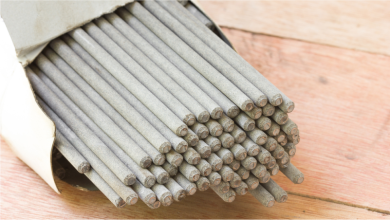SSD Hard Drive & Computer Repairs: The Essential Guide

Do you have computer problems and require computer repairs near me?
Well, you’re not alone. If you know how to fix your computer problems yourself, you can save a lot of money.
This essential guide covers the basics of computer repair to get your device up again.
What Is an SSD Hard Drive and Why Is It Important for Your Computer?
This hard drive (or solid-state drive) is a type of storage device that uses flash memory and doesn’t have any moving parts. Unlike traditional spinning hard drives, SSDs are much faster and more reliable, making them a popular choice for those who want to get the most out of their computers. They also use less power than a traditional hard drive, making them more energy efficient. Additionally, they come in a variety of sizes and form factors, so they can fit into almost any system. In addition to being used in laptops, many desktops and servers now use SSDs as well.
These SSDs are an increasingly popular choice for both laptops and desktop computers, providing faster boot times, improved performance, and long-lasting storage solutions than traditional hard disk drives.
It uses flash memory instead of spinning magnetic platters, resulting in dramatically faster read and write speeds and significantly lower power consumption. These also benefit from their lack of moving parts, meaning they are more resistant to physical damage and can run cooler, quieter, and with less vibration.
SSDs are much faster than hard drives, which can make your computer run faster.
With no moving parts, these hard drives are much more reliable than traditional hard drives. This makes them perfect for devices that are prone to be moved around.
All in all, SSDs provide a great solution for those looking for faster, longer-lasting storage solutions for their computer. With their superior speed, reliability, and energy efficiency, these are quickly becoming the go-to option for users who need the best performance from their system.
How to Know if It’s Time For an SSD Hard Drive Upgrade?
If you are having issues with your hard drive, the best way to repair it is to identify the source of the problem. There are many potential causes of file corruption, such as when the power goes out or something happens to the computer.
If this is the case, there are a few steps you can take to try and repair the drive yourself:
1. Check the drive for errors. You can use your computer’s built-in Disk Utility or other third-party software to run a scan and identify any errors.
2. Attempt to repair the errors. Some errors can be repaired automatically, while others may require manual intervention. If you cannot repair them, you may need to replace the drive.
3. Run a data recovery scan. This can help to recover lost data or files that have been deleted accidentally. You can use several third-party tools to run a recovery scan on your drive.
4. Replace the drive if necessary. If your SSD hard drive is completely unreadable or beyond repair, you may need to replace it with a new one. Some drives may not be compatible with your computer, so you’ll need to replace them with an exact model.
How To Troubleshoot Common PC Problems without Breaking The Bank?
Finding and fixing common PC problems can be tedious and expensive, so many people are looking for a cheaper solution. Fortunately, with a few helpful tips and tricks, it is possible to troubleshoot even the most complicated computer issues without spending a fortune on expensive computer repairs.
- Take a look at the hardware components of your computer. Often, hardware-related issues can be solved by simply replacing outdated components or upgrading them to faster hard drives. If that doesn’t work, try performing a system restore from a recent backup point.
- the problem is software-related, check if you have the latest versions of all your programs. Outdated versions can cause problems with newer systems and operating systems, so make sure everything is up-to-date. Additionally, make sure that your virus protection is active and up-to-date. If this doesn’t work, try uninstalling and reinstalling the software that is causing the issues.
- Finally, check the connection between your computer and other devices. Make sure that you are using the correct cables and that they are not defective. Make sure your WiFi router is turned on and working properly. If all else fails, consider resetting your network settings.
By following these simple tips and tricks, you should be able to troubleshoot the most common computer problems quickly and easily – without spending a fortune on expensive computer repairs.
Conclusion
In conclusion, it is important to understand the role of an SSD hard drive when it comes to computer repairs. Your computer has different storage drives that help you keep your data and programs safe and running smoothly.
With some basic tips and tricks, you can troubleshoot common computer issues and even upgrade or repair the hard drive yourself.
Investing in the right tools and understanding how to use them properly can help you save time and money in the long run.



